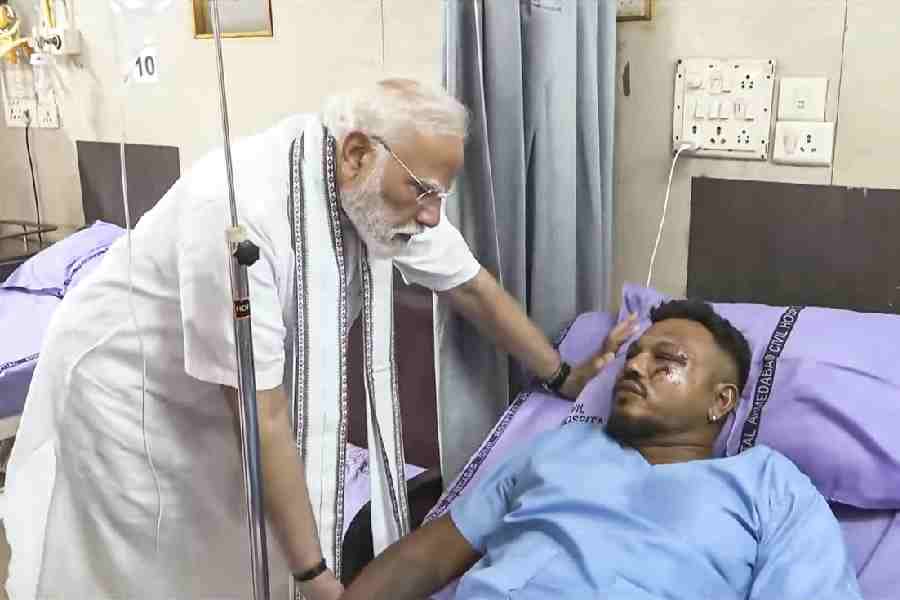 |
| LOOKING AHEAD: Chokher Bali (above) was released in the UK and the US for a three-week period; Director Subrata Sen (below), who is eyeing the international market with his Bibar |
 |
Bijay Khemka is a third generation film producer in Calcutta who is finalising a joint venture with a Bangladesh-based company for his forthcoming film Churi. And while he is at it, he is eyeing the international market. “More Bengalis reside outside the country than in India,” he says matter-of-factly.
Khemka believes the time is right for Tollygunge to spread its wings. He is not the only one to feel this way. Mahendra Soni, director, Venkatesh Films, is equally upbeat. “There is a market for good Bengali films abroad,” he says. And popular Bengali actor Prosenjit has made it his mission to turn Bengali films into successful hits overseas.
More and more people in Bengal have started to believe that the region’s films cannot survive in the state alone. Consider this ? Bengali is the seventh most-spoken language in the world. Apart from the language of West Bengal, it is the lingua franca of Bangladesh. To top it, a significant number of south Asians in countries such as the United Kingdom and the United States speaks Bengali.
There is a virgin market in the West, as against the oversaturated one in West Bengal. Khemka points out that only 300 centres in West Bengal screen Bengali films, down from 500 some years ago. “The market has shrunk,” he laments.
Added to this is the fragmentation of the audience. Industry sources point out that while movies made by filmmakers such as Rituparno Ghosh, Gautam Ghose and Buddhadeb Dasgupta will find takers amongst the Bengali bhadralok, commercial movies continue to make losses in the state.
There was an age when Bengali cinema ruled the roost. Satyajit Ray, Ritwik Ghatak and Mrinal Sen were internationally renowned, and Aparna Sen, Gautam Ghose, Utpalendu Chakrabarti and other directors of the era were well-known names in the world cinema circuit. Yet, though the films had a platform in international film festivals, they didn’t have a market in the West. “Film festivals are merely the window to make people aware of different films and directors; they do not help getting returns,” says a producer.
Bengali cinema declined in the Eighties when most of the films that Tollywood churned out could at best be described as a poor man’s B-grade Hindi film. Its advocates maintain that the audiences were changing, and the song-and-dance sequences were what they were looking for. Industry sources state that the downfall was as much for lack of creativity as for poor production values. By the Nineties, almost everyone had written off the Bengali film industry.
But the times ? as some industrywallahs insist ? are a-changin’. “The Bengali film industry, seven years ago, was plagued by maladies of low budgets, poor production values and zilch marketing effort,” says Prosenjit. “But all that is changing now.”
The industry started its overhaul somewhere around 2002. Since then, the budgets have increased and production standards have improved. Analysts put the Bengali film market as being worth Rs 120-140 crore. Today, the Calcutta film industry produces 45-50 movies a year.
Bengal is drawing the interests of producers outside the state as well. Today, even Bollywood production houses such as AB Corp and Rajshri Productions have forayed into producing Bengali movies. Along with them, Prosenjit’s company, Ideas, is seeking to further the cause of producing good Bengali cinema. And with that, he is keen to scout for markets in the East and the West.
“I am not looking at a half-hearted attempt at releasing Bengali films, but with the right distributor, I would look to release limited prints in the overseas market,” he says.
For Bengali cinema, this may be a new territory, but overseas markets have already been tried and tested by both Bollywood and the Southern film industry.
Since the time Bollywood went West, it has raked in more profits than ever. Industry experts say although it depends on individual films, Hindi films would have earned well over Rs 200 crore in the last three years from the overseas market alone. The South has tasted similarsuccess. Tamil, Malayalam and Telugu films have found audiences in West Asia, Singapore, Malaysia and Japan. The actor, Rajanikant, for instance, is known to be quite a popular star in Japan.
With the success of Bollywood and Mollywood in Western forays, why has Tollywood been lagging behind? The Bengal cinema industry has had little to write home about, barring a few instances of international releases of films such as Rituparno Ghosh’s Chokher Bali, which was released in theatres in the US and UK for a three-week period two years ago.
Producers and distributors believe Bengali cinema is just not good enough for international release. Says Kamal Bansal, director, RDB Entertainment, “Despite the presence of several good directors, the production values of Bengali films are far from satisfactory. Leave alone cinema of an international level, many of these films cannot even hold a candle to national films.”
The cost hinders most producers, too. While Bollywood distributors have tied up with local ones in the overseas market or have begun international operations, Bengali films cannot afford that kind of luxury. So will Bengali films ever make it to the overseas market?
Producers are hopeful that they will. RDB Entertainment is contemplating releasing its forthcoming movie ? Bibar ? in the West, while Venkatesh Films is studying the market. In fact, Soni of Venkatesh Films points out that the overseas market for home video and DVD of Bengali films indicates that Bengali films can do well in the West.
Prosenjit is, of course, zeroing in on an international Bengali audience. “As my contribution to Bengali cinema, whatever it has been, I would like to build an international market for mainstream Bengali cinema.” All that it needs now is the right mahurat.











